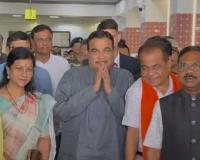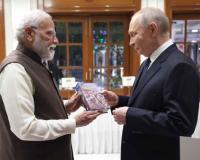Modi urges engineers on bullet train project to document learnings for future high-speed corridors

New Delhi, November 16: Prime Minister Narendra Modi has called on engineers working on the Mumbai-Ahmedabad bullet train project to systematically document their experiences so that the learning can be used in planning and implementing similar projects elsewhere in the country.
Modi interacted with engineers and other workers associated with the Mumbai-Ahmedabad High Speed Railway (MAHSR) project in Surat on Saturday and stressed that compiling these experiences in the form of a “blue book” would help India move decisively towards large-scale execution of bullet train networks, as per agency report. He underlined that the country should avoid repeating experiments from scratch and instead replicate and refine models that have already been tested, provided there is a clear understanding of why specific steps were taken.
He emphasised that such documentation would be meaningful only if it captured the reasoning behind every decision, warning that otherwise repetition could become directionless and ineffective. The prime minister suggested that keeping detailed records of the project’s journey would benefit future students and contribute to nation building, noting that those involved in the initiative have an opportunity to dedicate their efforts to the country and leave behind something of lasting value.
During the interaction, Modi reviewed the progress of the project, including adherence to speed and scheduling targets. According to a statement from the Prime Minister’s Office, workers assured him that the project is advancing smoothly without major difficulties.
An engineer from Kerala shared her experience of working at a noise barrier factory in Navsari, Gujarat, where robotic units are being used for welding reinforcement bars. Modi asked her how she viewed the experience of contributing to India’s first bullet train and what she shared about this historic achievement with her family. She expressed pride in being part of the project, describing it as a dream assignment and a moment of honour for her family.
Reflecting on the spirit of service to the nation, the prime minister highlighted how the desire to work for the country and contribute something new can become a powerful source of motivation. He drew a parallel with India’s space journey, recalling the likely emotions of the scientists who launched the country’s first satellite and noting that today hundreds of satellites are being placed in orbit.
Another employee from Bengaluru, serving as a chief engineering manager, spoke about the stringent design and engineering control processes followed in the project. She explained that at every stage of implementation, her team evaluates the advantages and disadvantages, identifies solutions and explores alternatives to ensure flawless execution.
The MAHSR project spans approximately 508 kilometres, with about 352 kilometres passing through Gujarat and Dadra and Nagar Haveli, and 156 kilometres through Maharashtra. The corridor will connect major cities including Sabarmati, Ahmedabad, Anand, Vadodara, Bharuch, Surat, Bilimora, Vapi, Boisar, Virar, Thane and Mumbai, marking a transformative step in India’s transport infrastructure.
The project is being built with advanced engineering techniques in line with international standards. Around 465 kilometres of the alignment, or roughly 85 per cent of the route, is designed on viaducts to minimise land disruption and enhance safety. So far, 326 kilometres of viaduct work has been completed and 17 out of 25 river bridges have been constructed.
Once operational, the bullet train is expected to reduce travel time between Mumbai and Ahmedabad to about two hours, making inter-city travel faster, more convenient and more comfortable. The project is also anticipated to boost trade, tourism and economic activity along the entire corridor, thereby accelerating regional development.






